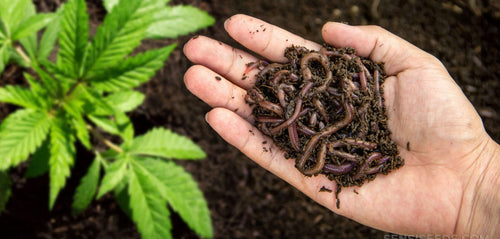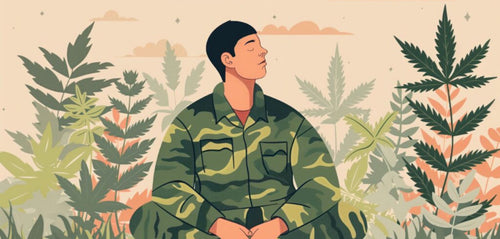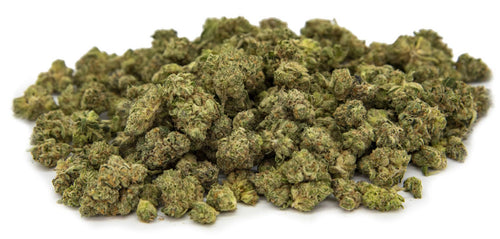#106: Microdosing 101: Tips, Dosage, and Best Practices
#106: Microdosing 101: Tips, Dosage, and Best Practices
A relatively new and emerging practice since the early 21st century, the microdosing of psychoactive substances, has gained popularity for its potential therapeutic and functional benefits. This practice has sparked a lot of interest and curiosity in recent years, led by influential individuals like Dr. James Fadiman, who pioneered scientific studies on microdosing.
Normally associated with psychedelic drugs like LSD, psilocybin, and mescaline, microdosing involves taking small doses of these substances regularly (usually every few days) to achieve subtle effects without experiencing any psychoactive or hallucinogenic effects. In Silicon Valley where productivity and innovation are highly prioritized, microdosing has become somewhat of a trend among professionals and entrepreneurs.
But what does microdosing have to do with cannabis? And how does it differ from regular cannabis use? For a better understanding, let's deep dive into the concept of microdosing cannabis.
The origins of microdosing

The modern concept of microdosing is a relatively new phenomenon, but its roots can be traced to ancient cultures and traditional medicinal practices that used small doses of psychoactive substances for therapeutic purposes. For example, some Native American and Indigenous Mexican cultures used lower doses of peyote and morning glory seeds for ritual and spiritual purposes, reducing hunger, inspiring courage, and treating ailments like gout and syphilis.
Dr. James Fadiman, often referred to as the "Father of Microdosing" in popular media, has been studying the effects of psychedelics on human consciousness for over 50 years. His book "The Psychedelic Explorer's Guide" in 2011, introduced a protocol for microdosing psychedelics for therapeutic, spiritual, and cognitive enhancement purposes has since been adopted by many microdosers.
The protocol involves taking a microdose of a psychedelic substance every third day. This means taking a dose on Day 1, followed by two days off (Days 2 and 3), and then repeating the cycle. A typical dose is around 5-10% of a full, recreational dose or about 10-20 micrograms of LSD or 0.1 to 0.3 grams of dried psilocybin mushrooms.
With cannabis, the concept of microdosing is similar, but the dosages may vary depending on the individual's tolerance and desired effects. The starting dose for microdosing cannabis is around 2.5 mg of THC with a gradual increase to up to 40 mg, depending on the individual's needs and responses.
Dr. Fadiman also recommends keeping a detailed journal to track the effects of each dose, monitor well-being, and adjust dosage as needed. This process of self-discovery and experimentation is a critical aspect of microdosing, as it allows individuals to fine-tune their experience and tailor it to their specific needs.
Small doses, big outcomes
So what are the potential benefits of microdosing and why has it gained so much attention in recent years? While research is quite limited, anecdotal evidence and small-scale studies have shown promising results. Some potential benefits of microdosing include:

Pain relief: Studies indicate that low-dose THC formulations can provide significant pain reduction, similar to higher doses, but with minimal side effects.
Anxiety and stress relief: Microdosing has been reported to help alleviate symptoms of anxiety and stress, allowing individuals to stay calm, focused, and productive.
Cognitive function: Unlike traditional high-dose cannabis consumption, microdosing does not impair cognitive performance and may even improve it.
Creativity: Divergent thinking, or the ability to come up with new and creative ideas, has been reported to be enhanced by microdosing.
Focus and motivation: Increase your focus, motivation, and productivity without the “high” associated with consuming higher doses of cannabis.
Mood enhancement: The interaction of THC with the brain's neurotransmitters, such as serotonin and dopamine, may contribute to an overall improvement in mood and well-being.
PTSD: The emotional intensity associated with traumatic memories and intrusive thoughts may be alleviated, while CBD may enhance memory consolidation and help the brain process traumatic experiences.
With so many potential benefits, it's no wonder that microdosing has gained so much attention and popularity in recent years. However, it's important to note that these benefits may vary from person to person and more research is needed to fully understand the effects of microdosing on a variety of conditions.
Finding your perfect dose
One of the key factors in successful microdosing is finding the right dosage. Here are a few tips to help you determine the right amount for you:
Initial dosage: A common starting point is 2.5 mg of THC which can be increased in small increments (e.g., 1 - 2.5 mg every 2-3 days) until the desired therapeutic effect is achieved.
Frequency: Dosages can be divided into multiple smaller doses throughout the day, such as one dose in the morning and another in the evening.
Maximum dosage: A maximum dose of 40 mg/day of THC is often cited as the upper limit for microdosing, but it's important to listen to your body and adjust accordingly.
Combination with CBD: Adding CBD to your microdosing routine can help balance out any potential negative effects of THC. The starting dose for CBD is typically 1-2 mg and can also be increased slowly if needed.
By starting with a low dosage and gradually increasing, you can avoid any potential negative effects, such as anxiety or paranoia, and find the ideal dosage for your individual needs.
Top picks for a successful microdosing journey
Before legalization, consumers were limited to flower, hash, and the occasional pot brownie. Fortunately, with the advent of legalization, there's no shortage of options for microdosers. Here are a few recommendations to get you started:
Vapes: An average vape cart or pen contains 1 gram of cannabis oil and about 800 mg of THC. This means that one small puff contains approximately 3 to 4 mg of THC, making it a convenient option for microdosing.
Edibles: Edibles in Canada are limited to 10 mg of THC per package, making them a more controlled option for microdosers. Get a pack of multi-dose gummies or chocolates and divide them into smaller portions to ensure a consistent dose.
Capsules: Pre-measured capsules are an easy and discreet option for microdosing. Available in 1, 2.5, 5 or 10 mg doses, they provide a consistent and accurate way to microdose.
Tinctures: Precise droppers make tinctures an ideal option for microdosers. They offer a faster onset time compared to edibles and are easy to adjust if a higher dose is needed.
With so many options available, consumers are encouraged to experiment and find what works best for them. Everyone's body chemistry is different, so what may work for one person may not work for another. Find the right method and dosage that works for you and stick with it for consistent results.
Is microdosing right for you?
When Dr. Fadiman first introduced the concept of microdosing, it was met with skepticism and hesitation. But since then, countless individuals have reported positive experiences with microdosing cannabis. The benefits of microdosing, including increased creativity, productivity, and overall well-being, have made it a popular practice among many. Give it a try and see how microdosing cannabis can enhance your daily life. Happy microdosing!
Back to all posts











